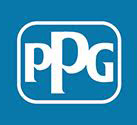
Technical Memoranda
The Importance of Membrane-Level Drainage
May 29, 2018
To help ensure long-term pavement durability on bridge decks coated with the Bridge Preservation™ waterproofing system, it is recommended that adequate membrane-level drainage be provided to ensure water is quickly removed from the bridge deck. Poor drainage results in pavement that is saturated with water, leading to accelerated deterioration of the pavement including potholes, cracking, stripping, and debonding. These issues are further exacerbated because bridge decks experience more freeze-thaw cycles than the adjacent roadways on grade.
In addition to membrane-level drainage, there are additional considerations when designing a waterproofing-asphalt assembly, including, but not limited to, tack coat selection, tack coat application rates, asphalt thickness, and adequate compaction.
Evaluation of MDI Exposure
May 17, 2018
As of August 8, 2013 The Occupational Safety and Health Administration (OSHA) Permissible Exposure Limit (PEL) for methylene diphenyl isocyanate (MDI) is 20 ppb as a Ceiling Limit. The recommended Threshold Limit Value-Time Weighted Average (TLV-TWA) established by the American Conference of Governmental Industrial Hygienists (ACGIH) for MDI is 5 ppb.
Three separate air monitoring tests of polyurea and polyurethane spray applied coating systems containing MDI were evaluated.
- Raw Material Supplier: Non Detectable* (0.3 ppb) to 0.93 ppb
- Field Study: 0.4 to 3.6 ppb
- Bridge Preservation Production Facility: 0.16 to 0.58 ppb**
All tests found the TLV-TWA for MDI exposure to be less than ACGIH limit of 5 ppb or the OSHA PEL of 20 ppb. The following are best practices when spraying aromatic polyurea;
- Prior to the start of the job, meet with the building owner and other trades on site to schedule an appropriate time to spray.
- Shut down HVAC systems or temporarily seal off (e.g., plastic sheeting and tape) outdoor air intakes on any mechanical units located near job site to avoid migration of chemical vapors and odors into structures.
- Avoid having other construction trades or other workers on job site during application.
- If other trades/workers must be on the site, establish a “safe work zone” and keep others at least 50 feet from the spray area.
- Use physical barriers (i.e., warning tape, cones, rope, etc…) to establish a safe work zone.
- Do not spray when wind speeds exceed 15 mph.
- Develop an overspray mitigation plan
- Determine in advance the potential for overspray issues
- Discuss any overspray potential with the building owner and make necessary arrangements to protect sensitive surfaces and to relocate vehicles
- Plan to use windscreens to prevent overspray mist from causing a problem
- Protect other surfaces that could be damaged from overspray (e.g., windows, skylights, mechanical equipment).
- Use appropriate PPE to prevent skin/eye contact and inhalation of spray mist/vapors. At a minimum, the applicator and helpers in the immediate spray area should wear an air-purifying respirator with pre-filters and organic vapor cartridges (i.e., OV/P100), full body disposable coverall, chemical resistant gloves (i.e., nitrile, neoprene or butyl rubber), eye protection, and work shoes.
This memorandum does not purport to address all the health concerns regarding the application of spray applied coatings, and should only be used for evaluation and screening purposes. In order to properly assess actual employee exposures IAW OSHA requirements, please follow all local, state, and federal regulations.
** Calculated from reported mg/m3
- Cikalo, John: The Dow Chemical Company Industrial Hygiene Report Personal and Area Air Monitoring for Methlene Bisphenyl Isocyanate (MDI) and Hexamethylene Diisocyanate (HDI) at Bondo Corporation, Atlanta, Georgia July 19, 200. 2006, Sept. 8
- Warnow, Mark J: Brittney, Incorporated Personal Air Monitoring Report During MDI Spraying Operations on 17 March 2010 at Kansas City Facilit. 2010, Mar. 10
- Ecoff, Scott Karlovich, Brian: An Evaluation of Airborne Diphenylmethane Diisocyanate (MDI), Polymeric MDI, and Diethyltoluenediamine (DETDA) During a Simulated Study Involving VersaFlex VF 380 at Cardinal Group Services Central City, PA. 2013, Sept. 9
Cold Weather Advisory
October 17, 2018
IMPORTANT:
Please consider placing your order before cold weather hits and transport becomes a serious concern. For smaller orders, also keep in mind that Fed Ex and UPS do not have heated trucks, meaning your material could face wide temperature fluctuations during its trip. This bulletin is to inform customers about the “best practices” for shipping, handling, storing, and installing Bridge Preservation™ systems during cold weather/winter conditions.
While Bridge Preservation makes no guarantee that following these guidelines will result in a more usable product, it is our estimation that these suggestions should be touchstones for best practices during the parts of the year with cold weather.
Shipping:
Shipping material during the cold winter months will reduce the internal temperature of the material and therefore will need to be warmed to recommended temperature levels prior to installation/application.
Storage:
Temperature Conditions: minimum of 60°F to 95°F, (18°C to 35°C).
Installation:
Temperature Conditions: It is recommended the material temperature be a minimum of 70 Degrees F, or higher. It is also recommended that a Laser Temperature Gun be available for accurate temperature readings before and during installations.
For cold (on-site) environments it is important to keep material in heat boxes or heated rooms. Installing material where ambient conditions and/or floor temperatures are below 60 degrees, material should be stored at 70 degrees F or above. The utilization of tank heaters/blankets and hose line heat tape is useful in maintaining the proper material temperature.
In cooler temperatures material viscosity is increased which puts more strain on proportioning equipment. Monitoring and maintaining recommended temperatures is a simple way to reduce the risk of processing issues that lead to additional costs.
Additional Notes:
- The cold makes it difficult for people to move and work for long periods of time.
- The cold typically changes the way that materials are applied, making paints or similar viscosity materials thicker and harder to work with.
- Applying the material on a cold surface will sometimes cause the material to freeze, or thicken to the extent that it is difficult or impossible to apply. This is somewhat less of a problem with our hot spray systems, but the common sense here applies nonetheless.
- Moisture can freeze on the surface, causing serious application problems and premature coating failure.
- The material may not properly cure, or stay soft for long periods of time.
- Be sure it can’t wait. It will always be easier to apply in warmer weather.
- Consider the substrate you’re coating. Metallic (non-porous) substrates will be easier to coat than wood and concrete (porous) substrates. Wood and concrete will be much more challenging to determine if the surface is damp.
- Do some research. You may ask us if we have “cold” or “fast” cure systems that will be more appropriate for your application. (We probably do.)
- Follow the technical data sheet documents closely. Read and understand the application directions.
- Be sure the material will cure. Some materials, like epoxies, will begin curing as the temperature warms up, and slow down or stop curing, as the temperature drops. Be sure you understand the type of material you’re using and don’t apply a material that will take two weeks to cure, especially if it’s going to get rubbed or damaged in the meantime.
- Be sure the surface is dry. This can be the most challenging problem because you may not be able to see if the surface is dry, particularly if it’s below 32°F. A nice trick is to take an area to which you want to apply the coating, and safely warm it up (you can use your hand). Take a tissue, place it on the surface and place you hand over the tissue. The heat from your hand will cause any ice to melt, and you’ll see the dampness on the tissue.
Of course, you can always use supplemental heat to warm the area or asset you’re trying to coat. If you do this, be very, very careful if you’re working in a confined space and pay attention to the substrate temperature, not the air temperature. That is, if you’re coating a fire hydrant, and you build a tent around the hydrant, don’t check the air temperature, check the temperature of the steel.

